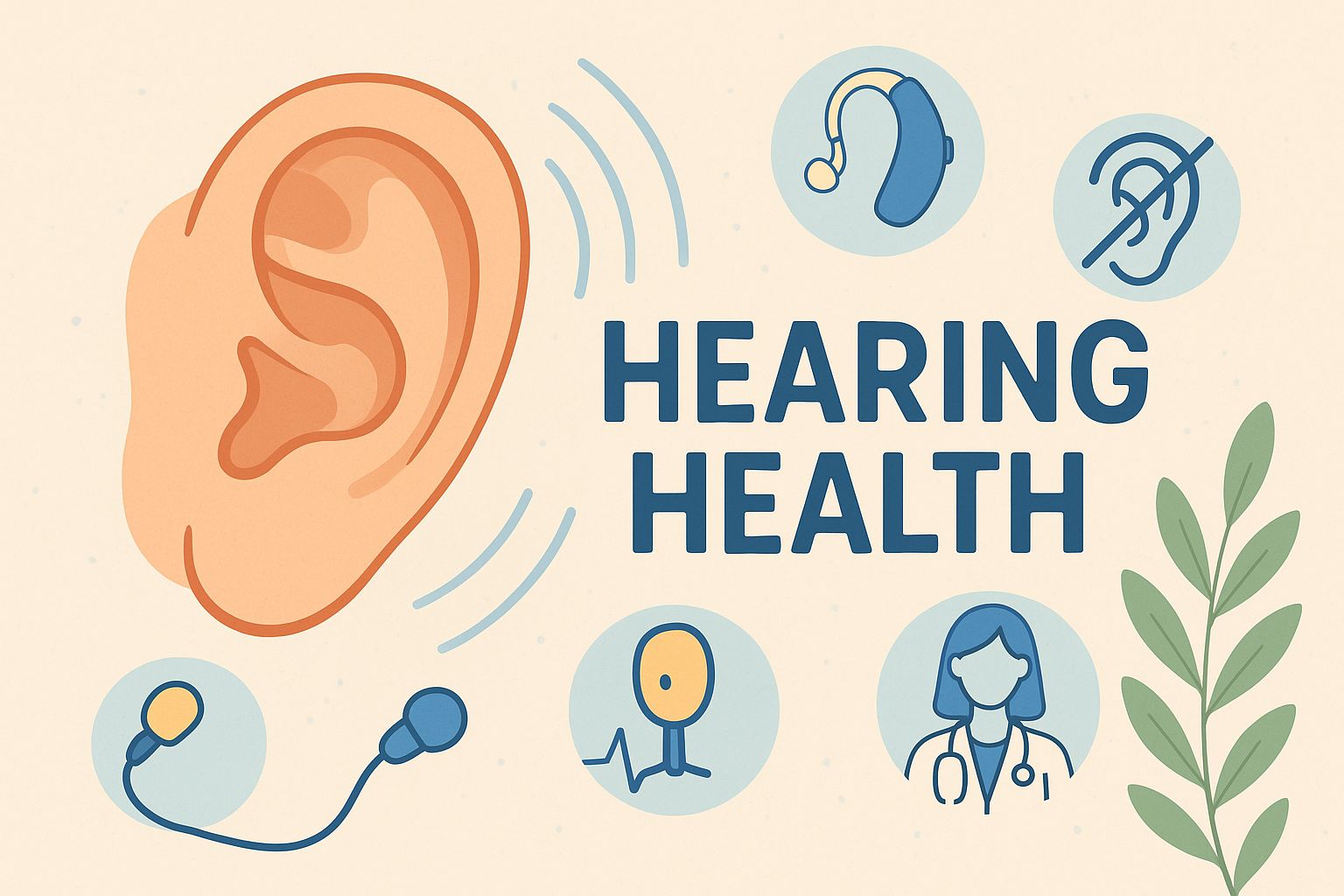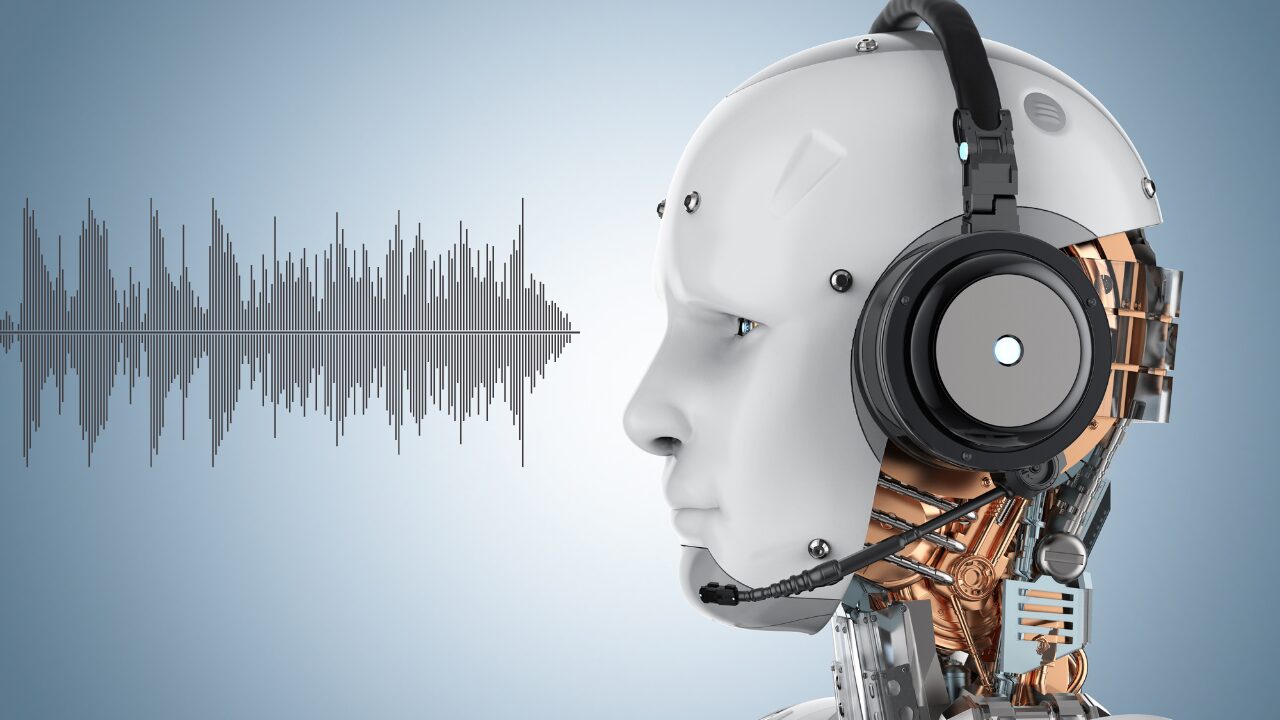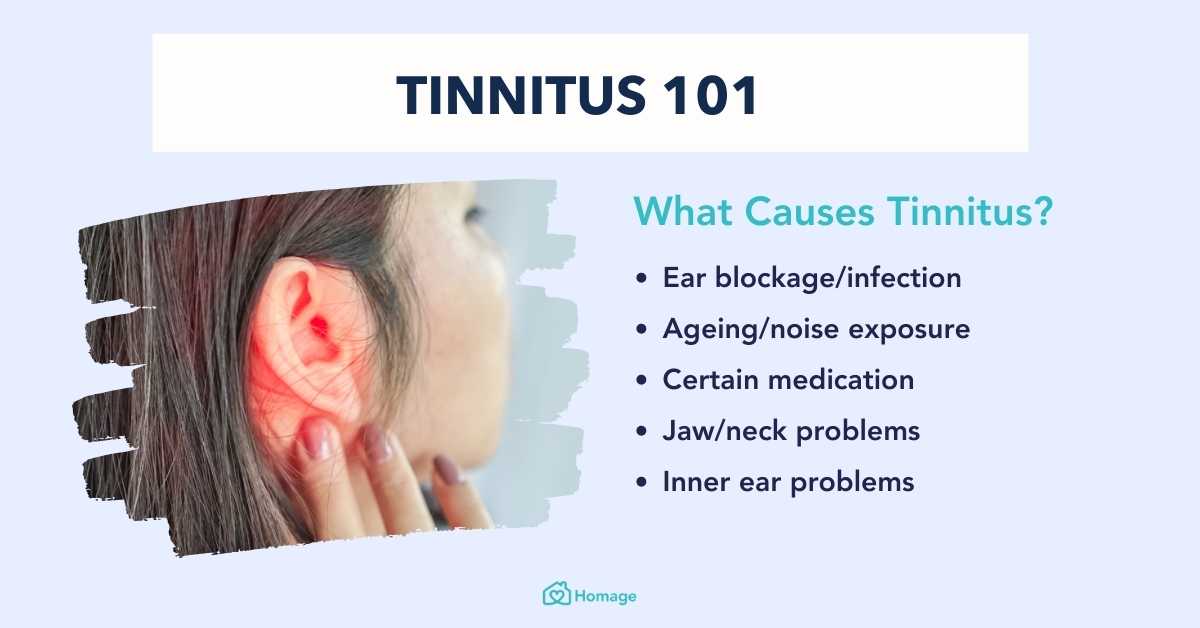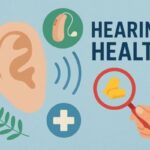Article-At-A-Glance
- Musicians are 4 times more likely to develop tinnitus than the general population, with noise-cancelling headphones potentially worsening the condition when used incorrectly
- The occlusion effect from combining noise-cancelling headphones with musicians’ earplugs can create uncomfortable pressure and exacerbate existing tinnitus
- Exposure to sounds exceeding 85 decibels for prolonged periods significantly increases hearing damage risk, with symptoms often not appearing until decades later
- Taking regular hearing breaks (5 minutes every hour) can significantly reduce the risk of developing permanent tinnitus
- Custom-fitted hearing protection solutions from audiologists specializing in musicians’ needs provide superior protection compared to consumer-grade options
Your hearing is your most valuable instrument. Yet many musicians unknowingly sacrifice this precious asset through improper use of noise-cancelling headphones, especially those already experiencing tinnitus symptoms. The ringing, buzzing, or hissing sensation of tinnitus affects nearly 20% of professional musicians, compared to just 5% of the general population.
While noise-cancelling technology offers tremendous benefits for performers needing to practice in noisy environments or protect sensitive ears, these tools can become double-edged swords when used incorrectly. Most concerning is that hearing damage accumulates silently over decades—many musicians don’t notice problems until their 40s or 50s, when irreversible damage has already occurred.
The Silent Damage: How Musicians Harm Their Hearing Without Knowing
“Hearing Loss and Musicians – Onstage …” from onstagemagazine.com and used with no modifications.
Musicians face unique hearing challenges that most people never encounter. The delayed effects of noise exposure mean you might tour for decades with normal hearing tests before suddenly developing significant issues. According to research from hearing health specialists, exposure damage typically manifests between ages 50-60 for those with consistent loud noise exposure—far earlier than the general population’s hearing decline that typically begins at 60-70 years old.
What makes this particularly dangerous is that tinnitus—that persistent ringing or buzzing sound in your ears—often serves as the first warning sign of permanent hearing damage. Yet many musicians dismiss these early symptoms as temporary or simply “part of the job.” A study of five Danish symphony orchestras found 19% of the 325 musicians surveyed reported severe tinnitus, highlighting how widespread this issue has become even in classical music settings.
1. Cranking Up Volume to Dangerous Levels
The most common mistake musicians make with noise-cancelling headphones is simple but devastating: turning the volume too high. The psychology behind this error is fascinating—the perceived audio quality improvement from noise cancellation often leads users to believe they can safely increase volume. In reality, the damage threshold remains exactly the same.
Why Musicians Push Volume Higher with Noise-Cancelling Headphones
When background noise disappears through active noise cancellation, music suddenly sounds clearer and more detailed. This auditory improvement creates a false sense of safety, tricking musicians into believing they can push volumes higher without consequence. The irony is painful—the very technology designed to protect hearing often leads to behaviors that damage it. Many musicians report that the immersive experience of noise-cancelling headphones makes them lose track of just how loud they’re listening. For those facing challenges with hearing, exploring tinnitus retraining therapy might provide long-term relief.
The 60/60 Rule for Safe Listening
Hearing health professionals recommend following the 60/60 rule when using any headphones, including noise-cancelling models. This means listening at no more than 60% of maximum volume for no longer than 60 minutes at a time. After this period, take at least a five-minute break to allow your auditory system to recover from the constant stimulation.
For musicians who need longer practice sessions, consider the diminishing returns of extended play without breaks. Not only does hearing fatigue set in, affecting your perception of pitch and tone, but the risk of tinnitus spikes and permanent damage increases dramatically. Some professional musicians now use specialized apps that monitor listening levels and automatically notify them when they’ve reached potentially harmful thresholds.
Decibel Levels That Cause Permanent Damage
Understanding specific decibel thresholds is crucial for musicians. Damage begins after just three minutes of exposure to sounds at 115 decibels—the typical volume of a rock concert. For context, busy traffic registers around 85 decibels, the level at which extended exposure becomes risky. Pain typically begins around 125 decibels, but significant damage occurs well before you feel discomfort.
Dangerous Decibel Levels for Musicians
85dB: Safe for up to 8 hours (busy traffic)
91dB: Safe for up to 2 hours (subway train)
100dB: Safe for only 15 minutes (typical rehearsal volume)
115dB: Damage begins after just 3 minutes (rock concert)
125dB: Pain threshold (amplified instruments at close range)
140dB: Immediate risk of permanent damage (arena peak volumes)
2. Using Noise-Cancelling Technology Incorrectly
“Background Noise on Microphone …” from neep.com and used with no modifications.
The second critical mistake occurs when musicians misunderstand how noise-cancelling technology actually works. Active noise cancellation (ANC) creates sound waves that neutralize incoming ambient noise—but this technology has specific limitations that, when ignored, can worsen tinnitus symptoms or even contribute to their development.
Many musicians make the dangerous assumption that noise-cancelling headphones provide hearing protection similar to earplugs. This fundamental misunderstanding leads to situations where performers use noise-cancelling headphones in extremely loud environments, believing they’re protecting their hearing when they’re actually doing the opposite.
How ANC Actually Works (And What It Doesn’t Do)
Active noise cancellation uses microphones to detect external sounds, then generates opposite sound waves that effectively “cancel out” the unwanted noise before it reaches your ear. This works remarkably well for consistent, low-frequency sounds like airplane engines, HVAC systems, or crowd noise. However, ANC struggles with sudden, sharp sounds—precisely the type most damaging to hearing. Drum hits, guitar feedback, or brass instrument peaks can slip through the noise cancellation and reach your ears at full volume, especially if you’ve compensated by raising the overall listening level.
The Occlusion Effect: When Earplugs and Headphones Don’t Mix
One particularly problematic scenario occurs when musicians combine noise-cancelling headphones with musicians’ earplugs. This combination creates what audiologists call the “occlusion effect”—an uncomfortable pressure sensation and amplification of internal sounds like your own voice, breathing, or even blood flow. Musicians report this pressure can exacerbate existing tinnitus or create the perfect conditions for developing it. The trapped air between the earplug and the headphone creates a resonant chamber that can actually amplify certain frequencies rather than reducing them. For more insights on managing tinnitus, you might find this article on progressive tinnitus management helpful.
Finding the Right Headphones for Your Specific Needs
For musicians with tinnitus, open-back headphones often provide a better alternative than noise-cancelling models. These headphones allow some natural ambient sound to enter, preventing the feeling of pressure that can intensify tinnitus symptoms. For studio work, many professionals with tinnitus prefer over-ear monitor headphones with moderate isolation rather than complete noise cancellation.
When travel necessitates noise-cancelling technology, look for models with adjustable ANC levels rather than only on/off options. The ability to control the intensity of noise cancellation allows you to find a comfortable balance that reduces fatigue without creating the uncomfortable pressure sensation that can trigger tinnitus flare-ups.
3. Ignoring Early Warning Signs of Tinnitus
“Tinnitus 101: Causes, Symptoms …” from www.homage.com.my and used with no modifications.
The temporary ringing after a loud rehearsal isn’t just an occupational annoyance—it’s your auditory system waving a red flag. Many musicians make the catastrophic mistake of ignoring these early warning signs, continuing to expose their ears to damaging sound levels until the tinnitus becomes permanent. The neurological nature of tinnitus means symptoms can fluctuate, creating false confidence that the condition is resolving on its own.
What makes this particularly dangerous is that hearing damage accumulates silently. A musician can tour for decades with normal hearing tests, not realizing the cumulative exposure is setting them up for significant problems that typically emerge between ages 50-60. By then, the damage is irreversible. For more insights on this issue, read about how musicians are at high risk for tinnitus.
Temporary vs. Permanent Tinnitus Symptoms
Temporary tinnitus typically resolves within 16-48 hours after exposure to loud sound. This transient symptom indicates your auditory system experienced stress but can still recover. When tinnitus persists beyond 48 hours, or begins appearing after progressively shorter exposure periods, you’re witnessing the transition from temporary to permanent neural changes. The critical difference lies not just in duration but in recovery pattern—temporary tinnitus consistently improves with rest, while permanent tinnitus maintains a baseline presence even after extended recovery periods.
Red Flags That Require Immediate Action
Certain tinnitus symptoms demand immediate professional attention. If you experience sudden onset of severe tinnitus accompanied by vertigo, hearing loss, or ear fullness, seek medical evaluation within 24-72 hours. This combination can indicate Meniere’s disease or sudden sensorineural hearing loss—conditions where prompt intervention significantly improves outcomes. Similarly, pulsatile tinnitus (rhythmic sound matching your heartbeat) or tinnitus in only one ear requires immediate investigation as these can signal vascular issues requiring specialized treatment.
The Dangerous Myth of “Getting Used To It”
Perhaps the most destructive myth about tinnitus is that musicians should simply “get used to it” as an inevitable part of their profession. This dangerous misconception leads performers to continue damaging practices long after warning signs appear. What many don’t realize is that while the brain can habituate to tinnitus (become less consciously aware of it), the underlying neural disruption continues affecting hearing acuity, pitch discrimination, and dynamic range—all essential tools for musicians. True protection requires addressing the underlying causes, not merely accepting the symptoms as inevitable.
4. Skipping Regular Hearing Breaks
Marathon practice sessions with noise-cancelling headphones create the perfect conditions for hearing damage. Without regular breaks, the auditory system has no opportunity to recover from constant stimulation, leading to temporary threshold shifts that can become permanent with repeated exposure.
The body’s protective mechanisms actually work against musicians in this scenario. As temporary fatigue sets in during extended sessions, many performers instinctively increase volume to compensate for diminished perception—creating a dangerous cycle where the ears receive increasingly damaging levels of sound precisely when they’re most vulnerable. For musicians seeking solutions, understanding progressive tinnitus management can be crucial in breaking this cycle.
Why Your Ears Need Recovery Time
The cochlear hair cells in your inner ear convert sound vibrations into electrical signals for the brain to interpret as sound. These delicate structures require recovery time after continuous stimulation, particularly at higher volumes. Without adequate breaks, these cells can become permanently damaged, leading to both hearing loss and tinnitus. Research shows that brief periods of relative quiet allow these cells to stabilize, preventing the metabolic exhaustion that leads to cell death. This recovery process is especially critical for the high-frequency hair cells most vulnerable to noise damage—the same cells responsible for the clarity and definition in music that professionals depend on.
Implementing the 5-Minute Reset Every Hour
Professional musicians are increasingly adopting the 5-minute reset strategy to preserve their hearing longevity. This simple technique involves removing all headphones and earplugs for five full minutes every hour, preferably in a quiet environment. This brief reset allows the cochlear hair cells to stabilize and reduces the risk of permanent damage. Many recording studios now build these breaks directly into session schedules, recognizing that the small time investment significantly improves both hearing protection and performance quality during long recording days. For those interested in further hearing protection strategies, exploring musicians’ success stories with tinnitus retraining therapy can provide valuable insights.
For those using noise-cancelling headphones specifically, these regular breaks serve another crucial purpose—they prevent the disorientation that can occur with extended ANC use. Many musicians report feeling temporarily “disconnected” from their acoustic environment after hours of noise cancellation, which can impact spatial awareness and even balance. Regular breaks help recalibrate your auditory system to natural environmental sounds.
How Sleep Affects Tinnitus Recovery
Sleep quality significantly impacts both tinnitus severity and hearing recovery. During deep sleep stages, the auditory system undergoes essential maintenance and repair processes that help mitigate damage from sound exposure. Musicians who consistently sacrifice sleep quality report more intense and persistent tinnitus symptoms, even with otherwise appropriate hearing protection practices. Poor sleep creates a dangerous cycle where tinnitus disrupts sleep, which then worsens tinnitus severity.
Creating optimal sleep conditions becomes especially important for musicians with existing tinnitus. Strategies include maintaining consistent sleep schedules even during touring, using subtle background sounds to mask tinnitus at bedtime, and avoiding caffeine and alcohol before sleep. Some performers find that sleeping with their head slightly elevated reduces tinnitus symptoms by optimizing blood flow to the inner ear.
5. Avoiding Professional Hearing Assessments
“Workplace Hearing Testing: A Safety …” from disa.com and used with no modifications.
The fifth critical mistake musicians make is relying on consumer-grade hearing protection without professional guidance. While over-the-counter solutions might seem adequate, they rarely address the specific needs of professional musicians who require precision hearing across unique frequency ranges. The difference between generic and professional-grade solutions can mean the difference between career longevity and premature retirement due to hearing issues.
Most concerning is that hearing damage often progresses invisibly until significant impairment has occurred. Regular professional assessments can detect subtle changes long before they become noticeable in everyday life, allowing for intervention before permanent damage sets in. For musicians, annual hearing evaluations should be considered as essential as regular instrument maintenance.
When to See an Audiologist Who Specializes in Musicians
Musicians should establish a relationship with an audiologist who specializes in performing arts medicine at the beginning of their career, not after problems develop. These specialists understand the unique demands of musical performance and can provide solutions that protect hearing while preserving the acoustic fidelity essential for professional work. Seek evaluation immediately if you experience tinnitus lasting more than 48 hours after exposure, difficulty understanding speech in noisy environments, or increasing need to turn up volume to hear clearly. For more information on managing tinnitus, explore progressive tinnitus management.
Many musicians wait until they’re experiencing significant symptoms before seeking help, not realizing that early intervention can prevent permanent damage. Remember that tinnitus and hearing changes often emerge decades after the exposure that caused them—by establishing baseline measurements early, you create a comparative reference that makes subtle changes easier to detect and address.
Custom-Fitted Solutions That Actually Work
Custom-molded musicians’ earplugs provide dramatically better protection than generic options. These professional-grade solutions offer flat attenuation across frequencies, meaning they reduce volume without distorting the tonal balance of what you’re hearing. This preservation of acoustic fidelity is essential for musicians who need to maintain pitch accuracy and timbral awareness. Custom solutions also create a proper seal without the uncomfortable pressure that can exacerbate tinnitus, addressing the occlusion effect that commonly occurs when using generic earplugs with headphones.
Monitoring Hearing Changes Over Time
Sophisticated hearing assessments go far beyond basic audiograms. For musicians, extended high-frequency testing and speech-in-noise evaluations provide critical insights into subtle changes that might affect performance. Modern diagnostic techniques can detect damage to outer hair cells before it registers on traditional hearing tests, allowing for preventive measures before symptoms become noticeable. For those interested in exploring further, musicians’ success stories with tinnitus retraining therapy offer valuable insights into managing hearing health proactively.
The most effective approach involves establishing a baseline measurement early in your career, then scheduling regular follow-up assessments to track changes over time. This longitudinal monitoring allows for early detection of problematic patterns, enabling intervention before temporary shifts become permanent. Some musicians now incorporate these professional assessments into their pre-tour preparation, recognizing that hearing health directly impacts performance quality.
Protect Your Musical Future: Essential Next Steps
“post_title #separator_sa – Sweetheart Pub” from sweetheartpr.com and used with no modifications.
Protecting your hearing requires a comprehensive approach combining appropriate technology, behavioral changes, and professional guidance. Start by scheduling a baseline hearing assessment with an audiologist specializing in musicians’ needs. Invest in proper custom-fitted hearing protection designed specifically for musical environments. Implement the 60/60 rule and 5-minute reset strategy during all practice and performance situations involving headphones. Finally, consider tinnitus symptoms as serious warning signs requiring immediate attention and adjustment of practices.
Remember that hearing damage accumulates silently over decades, with symptoms often not appearing until permanent changes have occurred. The decisions you make today about your hearing protection will determine whether you’re still enjoying clear, vibrant sound in your 60s and beyond. For specialized guidance on protecting your hearing while maintaining peak performance, TrebleHealth offers personalized recommendations from audiologists who understand the unique challenges musicians face.
Frequently Asked Questions
Musicians have many questions about the relationship between noise-cancelling headphones and tinnitus. Here are expert answers to the most common concerns about protecting your hearing while maintaining peak performance.
Can noise-cancelling headphones make tinnitus worse?
Yes, noise-cancelling headphones can potentially worsen tinnitus under certain conditions. The primary mechanism involves the pressure sensation created by active noise cancellation, which some users find intensifies their awareness of tinnitus. This effect is particularly pronounced in individuals with pre-existing pressure sensitivity or hyperacusis (sensitivity to normal environmental sounds).
Another risk factor involves the false sense of security noise-cancelling technology provides, which often leads users to increase volume to unsafe levels. While the technology effectively blocks ambient noise, it doesn’t protect against the self-inflicted damage of excessive volume from the headphones themselves.
The occlusion effect presents a third mechanism for tinnitus exacerbation. When noise-cancelling headphones create a tight seal against the ear, internal sounds like blood flow and jaw movement become more noticeable. For those with existing tinnitus, this increased awareness of internal sounds can make the condition seem subjectively louder or more intrusive. For more insights on managing tinnitus, learn about tinnitus masking hearing aids and their benefits.
What’s the difference between musician’s earplugs and regular earplugs?
Musician’s earplugs provide attenuated protection with flat frequency response, meaning they reduce volume evenly across all frequencies rather than disproportionately blocking high frequencies as foam earplugs do. This even attenuation preserves the natural tonal balance and clarity of music while reducing overall volume to safe levels. Professional-grade musicians’ earplugs typically offer interchangeable filters with different decibel reduction levels (usually 9dB, 15dB, and 25dB), allowing performers to select appropriate protection based on specific performance environments. For more insights, you can explore the occlusion effect with musicians earplugs.
How long after exposure to loud sound can tinnitus develop?
Tinnitus can develop immediately following exposure to loud sound or emerge gradually over time, depending on exposure patterns. Acute noise-induced tinnitus typically begins within hours of significant exposure and may persist for 16-48 hours before resolving if the damage is temporary. However, permanent tinnitus from cumulative exposure often develops through a more insidious pattern, beginning as occasional episodes following exposure that gradually become more frequent and persistent. For those seeking relief, tinnitus masking hearing aids can be a beneficial option.
Most concerning for musicians is the delayed manifestation of symptoms decades after the damaging exposure. Research indicates that noise-related hearing damage often becomes apparent between ages 50-60 for those with consistent exposure throughout their careers, even when hearing tests appeared normal during younger years. This delayed onset makes preventive measures crucial even when no symptoms are currently present.
Are in-ear monitors safer than headphones for musicians?
- Custom-molded in-ear monitors can be safer than headphones when properly fitted and used at appropriate volumes, as they provide superior isolation requiring less volume to achieve clarity
- The isolation factor of quality IEMs means musicians typically listen at 6-9dB lower volume compared to traditional headphones
- Many professional IEM systems include built-in limiters that prevent sudden volume spikes from reaching dangerous levels
- The direct coupling to the ear canal eliminates environmental variables that often cause musicians to increase volume with traditional headphones
However, this safety advantage completely disappears when IEMs are used incorrectly. The most common mistake involves turning IEMs to excessive volumes to overcome stage noise, rather than relying on their isolation properties. Another critical error occurs when performers remove one earpiece to hear the audience or other musicians, which typically leads to volume compensation in the remaining earpiece to dangerous levels.
For optimal protection, musicians should work with audio engineers to create proper monitor mixes that provide clarity at moderate volumes. Many professionals now incorporate ambient microphones into their IEM setup, allowing them to hear environmental sounds without removing earpieces or increasing volume.
Remember that any listening device—whether headphones, IEMs, or speakers—can cause damage when used at excessive volumes. The primary advantage of quality IEMs comes from their superior isolation, which reduces the temptation to increase volume in noisy environments. For more insights on how musicians are at high risk for tinnitus, explore further details in this article.
Can tinnitus from headphone use go away completely?
Temporary tinnitus from recent headphone exposure often resolves completely within 16-48 hours when the underlying cause was a temporary threshold shift rather than permanent damage. This recovery depends on removing the damaging stimulus, allowing adequate rest time, and avoiding additional exposure during the recovery period. Many musicians experience this temporary form after particularly loud rehearsals or performances. For more insights, you can read about progressive tinnitus management.
For tinnitus that has persisted beyond several weeks, complete resolution becomes less likely, but significant improvement remains possible. The brain’s neuroplasticity allows it to gradually reduce its attention to the tinnitus signal through a process called habituation. This doesn’t eliminate the underlying neural activity but reduces its conscious perception and emotional impact. Professional acoustic therapy programs can accelerate this habituation process, helping musicians manage persistent tinnitus more effectively.
The most crucial factor for musicians with existing tinnitus is preventing further damage through appropriate protection during all sound exposure. TrebleHealth specializes in comprehensive approaches to tinnitus management specifically designed for musicians and audio professionals who need to maintain their hearing acuity for their careers.
Musicians are often at high risk for developing tinnitus due to prolonged exposure to loud music. This condition can be both frustrating and debilitating, affecting their ability to perform and enjoy music. Understanding the causes and finding effective solutions is crucial for those in the music industry. To learn more about the risks and how musicians can protect their hearing, check out this insightful article on musicians at high risk for tinnitus.




















